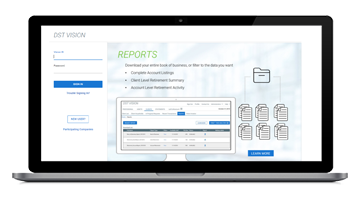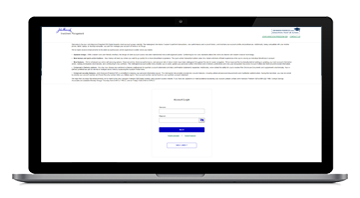Direct lending outlook: four expectations for 2024
Direct lending’s days as an esoteric asset class are no more. Offering the potential for attractive yields, reduced volatility, and portfolio diversification, this substantial segment of the private credit market seems to be becoming a core allocation for insurers, pensions, family offices, and income investors of all stripes. We believe this very moment represents an attractive entry point—and that direct lending is likely to continue shining as a critical part of a diversified portfolio in the year ahead.

Key takeaways
- An abundance of capital within private markets—equity and credit—may help fuel a rebound in the M&A market.
- The demand for private credit solutions from direct lenders will likely continue to grow, taking share from the liquid loan and bond markets.
- As default rates rise, direct lending losses should be lower relative to leveraged loans and high-yield bonds.
- Higher interest rates are likely to endure, which would help sustain the favorable risk-reward profile investors enjoy.
1 We expect an uptick in M&A
While merger-and-acquisition (M&A) activity has remained muted for months, near-term pressure to deploy idle capital is mounting. In private equity (PE) buyouts alone, sponsors are sitting on $1.3 trillion of dry powder.1 Meanwhile, PE’s key stakeholder, the limited partner, is eager to see increased liquidity from maturing portfolios, which have experienced a multiquarter dearth in exit activity. In our view, PE’s growing need for liquidity—paired with the private credit market’s need to deploy $434 billion of its own dry powder1—will help promote a busier buyout market in 2024.
As monetary policy has proven to be more effective, interest-rate clarity and predictability will likely follow, providing additional support for M&A activity. When the U.S. Federal Reserve (Fed) began its tightening cycle on March 17, 2022, the rate-increase trajectory was unknown. Now, 11 hikes, 21 months, and 525 basis points later, there’s more transparency on how much further tightening may or may not lie ahead.
There will also be increasingly greater clarity about which businesses can handle a higher-for-longer interest-rate environment—and which ones can’t. Since the beginning of the Fed’s tightening cycle, companies that have navigated the higher rates while still managing to sustain margins are beginning to differentiate themselves as good acquisition candidates for PE sponsors. We expect worthy transaction targets to become more obvious with each passing day, prompting greater activity in the year ahead.
While we’re confident PE sponsors will be more bullish about buying, just how bullish remains to be seen. Geopolitical risks are much harder to predict and can quickly dampen or reverse positive momentum. However, on balance, we believe North America remains an attractive market to invest in, and pent-up demand, along with normalizing capital costs, will help buyers and sellers recalibrate expectations, creating a more robust M&A market in 2024.
2 We expect direct lending to expand further as banks retrench
Higher interest rates, persistent market uncertainty, and more onerous capital requirements are prompting a shift within lending away from banks and broadly syndicated loans and toward alternative financing sources. The Silicon Valley Bank, Signature, and First Republic failures in 2023 only accelerated a trend that dates to the aftermath of the global financial crisis of 2008/2009. Financial conditions are likely to continue tightening as banks adjust to increased scrutiny and greater regulatory capital requirements. In the quarter ended September 30, 2023, a large net percentage of banks reported stricter lending standards for commercial and industrial loans, citing the uncertain economic outlook as the chief reason. The banking industry’s mounting challenges—shared, by extension, with the broadly syndicated loan market—have opened further opportunity for direct lenders.
Private credit remains the financing choice for buyouts
In our view, direct lending will continue to be an important, permanent financing option within the private markets and an increasingly more attractive alternative to the liquid loan and bond markets. In recent months, we’ve seen several large, seasoned issuers refinance out of the broadly syndicated loan market and into the private debt market, and we expect that trend to continue. About $30 billion of debt is slated to mature in 2024—followed by over $60 billion in 2025 and nearly $100 billion in 2026.2 The maturity wall in the leveraged loan market is likely to produce more refinancing with direct lenders as more borrowers become willing to pay for convenience, speed, and certainty of execution.
3 We expect direct lenders to experience lower loss rates
While default rates across credit markets are bound to increase in 2024 as borrowers feel the stress of an extended period of higher interest rates, we expect credit losses for direct lenders to fare better than their counterparts holding broadly syndicated loans and high-yield bonds.
Strong relationships between PE sponsors and direct lenders can help portfolio companies better weather stormy periods, a dynamic we witnessed firsthand during the pandemic. Sponsor-club relationships tend to remain close, collegial, and cooperative, and many have been tested through tough times. The ability of sponsors to lower lender consensus risk is greatly enhanced with a smaller group of experienced relationship lenders versus a much larger group in a broadly syndicated transaction. Historically, PE sponsors have exhibited a willingness to provide additional capital infusion and human resource support in times of financial stress and operational challenges. Lender consensus in club-style financing also promotes better lender alignment and negotiating power that could result in higher ultimate recoveries and lower losses relative to what could be experienced in syndicated leveraged loans and high-yield bonds.
Robust reporting and maintenance covenants, which are frequent provisions of direct loans, allow lenders to identify challenges and proactively address an issue before it leads to a payment default. Financial maintenance covenants also serve as tools to closely monitor loans already in default, ensuring a quicker seat at the table and more effective credit management.
4 We expect direct lending all-in yields to remain above 10%
Direct lending all-in yields have historically averaged around 8%; investors allocating today have an opportunity to do better. Given the floating-rate nature of the underlying loans, direct lenders benefit from a higher-for-longer interest-rate environment while maintaining downside protection with rate floors, typically at 1.0%. Combining the forward three-month Secured Overnight Financing Rate curve—projected to average about 450 basis points over the next three years—with direct lending’s historical credit spread would suggest that the asset class stands poised to provide an attractive risk/return profile for the foreseeable future.
Above-average yields are poised to persist through 2024 and beyond
We expect all-in yields to remain above 10% throughout the next year—and to average 10% over the next three years.3 Offering the potential for attractive yields, reduced volatility, and portfolio diversification, direct lending combines characteristics unlikely to be matched by other investments in the year ahead.
1 PitchBook, December 31, 2022. 2 The Wall Street Journal, November 10, 2023, wsj.com/finance/how-risky-is-private-credit-analysts-are-piecing-together-clues-79762038?st=69cqpayifvhrup4&reflink=desktopwebshare_permalink. 3 Manulife Investment Management, as of November 30, 2023.
Important disclosures
Investing involves risks, including the potential loss of principal. Financial markets are volatile and can fluctuate significantly in response to company, industry, political, regulatory, market, or economic developments. The information provided does not take into account the suitability, investment objectives, financial situation, or particular needs of any specific person.
All overviews and commentary are intended to be general in nature and for current interest. While helpful, these overviews are no substitute for professional tax, investment or legal advice. Clients and prospects should seek professional advice for their particular situation. Neither Manulife Investment Management, nor any of its affiliates or representatives (collectively “Manulife Investment Management”) is providing tax, investment or legal advice.
This material is intended for the exclusive use of recipients in jurisdictions who are allowed to receive the material under their applicable law. The opinions expressed are those of the author(s) and are subject to change without notice. Our investment teams may hold different views and make different investment decisions. These opinions may not necessarily reflect the views of Manulife Investment Management. The information and/or analysis contained in this material has been compiled or arrived at from sources believed to be reliable, but Manulife Investment Management does not make any representation as to their accuracy, correctness, usefulness, or completeness and does not accept liability for any loss arising from the use of the information and/or analysis contained. The information in this material may contain projections or other forward-looking statements regarding future events, targets, management discipline, or other expectations, and is only current as of the date indicated. The information in this document, including statements concerning financial market trends, are based on current market conditions, which will fluctuate and may be superseded by subsequent market events or for other reasons. Manulife Investment Management disclaims any responsibility to update such information.
Manulife Investment Management shall not assume any liability or responsibility for any direct or indirect loss or damage or any other consequence of any person acting or not acting in reliance on the information contained here. This material was prepared solely for informational purposes, does not constitute a recommendation, professional advice, an offer or an invitation by or on behalf of Manulife Investment Management to any person to buy or sell any security or adopt any investment approach, and is no indication of trading intent in any fund or account managed by Manulife Investment Management. No investment strategy or risk management technique can guarantee returns or eliminate risk in any market environment. Diversification or asset allocation does not guarantee a profit or protect against the risk of loss in any market. Unless otherwise specified, all data is sourced from Manulife Investment Management. Past performance does not guarantee future results.
This material has not been reviewed by, and is not registered with, any securities or other regulatory authority, and may, where appropriate, be distributed by Manulife Investment Management and its subsidiaries and affiliates, which includes the John Hancock Investment Management brand.
Manulife, Manulife Investment Management, Stylized M Design, and Manulife Investment Management & Stylized M Design are trademarks of The Manufacturers Life Insurance Company and are used by it, and by its affiliates under license.
3266591







